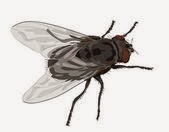In today's bug hunting trip, I caught enough grasshoppers and crickets to make a meal.
Since hearing that large scale entomophagy has potential as a more environmentally efficient of protein then animal live stock, ive been fascinated with a future with beetle burgers, fly fritters, and peanut butterfly jelly sandwiches.
I decided to cook them chapuline style, a dish common in parts of Mexico. while cooking the crickets I found the process to be kind of diabolical, before reading anymore be warned it may seem kind of nasty.
First I made sure I had all my ingredients
Then I put the crickets in the fridge for an hour, the cold slows their metabolism and makes them sluggish. They are a lot easier to handle this way. The other advantage to this method is it does not kill them. After a cricket dies funk sets in quickly, making them too rotten to eat. Like lobster, it is best to cook them alive. This made sense to me because both species are arthropods.
so into the pot they go
They need to cook in boiling water for one or two minuets, until they turn red
like Lobster. After they are cooked, drain them...
pull their legs and wings off...
and fry them in a sauce pan tablespoon of canola oil on medium heat
I added garlic and lime juice after three minutes and turned it down to a simmer
When they were done, made them into taco
added the fixings....
and chowed down
the one that got away
If you have read this far then maybe you are interested in eating insects too. They were tasty, especially in a taco. the bigger grasshoppers I tended to like more because they were meatier. I wish I used more oil to fry them in so they could have been cruncher. It was an overall good eating experience, this experience has taught me that I would love to live in a world of mass entomophagy. I'll probably eat more bugs when I get the chance. If I catch enough next week, I'm going try chocolate covered crickets.
 The fly
The fly



